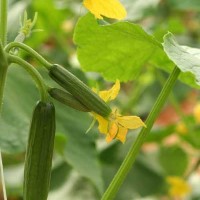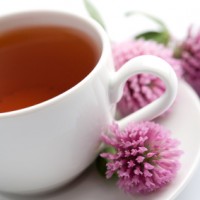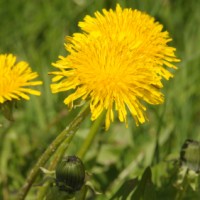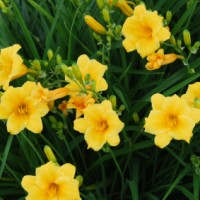Although you may never have considered eating flowers, you’ve probably been doing it all along and never realized. Popular vegetables such as broccoli, cauliflower, and artichokes are all flowers. Capers, those tangy little green balls used in Mediterranean cooking, are actually the unripened flower buds of Capparis spinosa, a prickly perennial plant. And the costly herb saffron, of course, comes from the stamens of a type of crocus. But many other flowers may be harvested for cooking as well, a surprising number of which may be growing in your garden right now.
Flowers can be tossed in salads, sauteed with vegetables, fried in fritters, combined with soft butter or cream cheese as a spread, and even frozen in ice cubes to add interest to cold drinks. Cooking with flowers was in vogue in Victorian times, and many chefs are returning to the practice.
But, before you bite into a big flower sandwich, a word of caution: Only use flowers that have been grown organically and have not been sprayed with pesticides. Never gather flowers for eating from the side of the highway or use flowers obtained from a greenhouse or nursery. They may be laced with harmful chemicals. Also, in most cases, use only flower petals. Discard the stamens before cooking.
Not all flowers are edible; some are poisonous, so check first. The following is a short list of eat and eat nots:
Inedible Flowers
| Azaleas |
Buttercups |
| Clematis |
Daffodils |
| Delphiniums |
Foxgloves |
| Hydrangeas |
Irises |
| Lilies-of-the-valley |
Monkshood |
| Oleanders |
Sweet peas |
| Wisteria |
|
Edible Flowers:
| Bergamot (Bee balm) |
Chives |
| Clover |
Dandelions |
| Daylilies |
Dianthus |
| Hollyhocks |
Lavender |
| Nasturtiums |
Pansies |
| Roses |
Scented geraniums |
| Squash blossoms |
Sunflowers |
| Tulips |
Violets |
Flower Flavors
Some edible flowers have very mild flavor and are best used for enhancing the beauty of salads and other dishes. Many other flowers, however, have their own unique tastes that range from peppery to tangy, spicy, or minty.
 |
Squash and pumpkin blossoms are among the most widely used flowers in cooking. Not surprisingly, they have a mild raw-squash flavor. Try our recipe for Fried Squash Blossoms. |
 |
Bee balm blossoms (as well as leaves) can be used in place of oregano. The red blossoms have a minty flavor. |
 |
Clover blossoms have a sweet, licorice flavor. |
 |
Dandelion blossoms, when picked young, are sweet and honey-like. The unopened buds are even better. Older, bigger blossoms are likely bitter. |
 |
Daylily flavor has been compared to lettuce or melon, or a combination of asparagus and zucchini. Some say different colors have different flavors. Daylilies are the only kind of lilies that are edible. But don’t eat gobs of them. They can have a mild laxative or diuretic effect. |
 |
Calendulas (marigolds) have been called “poor man’s saffron.” They range from spicy to tangy and peppery. Add them to soups, spreads, or scrambled eggs. |
 |
The flowers of most edible herbs are also edible, including arugula, angelica, borage, chamomile, chervil, dill, fennel, sorrel, marjoram, mint, oregano, rosemary, sage, savory, and thyme. |
 |
Honeysuckle has a sweet honey-like flavor. But avoid the berries, which are poisonous. |
 |
And, in case you should have a sudden hankering for pansies, bend the rules and eat the whole flower, not just the petals. The petals are quite mild, but using the whole flower adds a nuance of wintergreen in a salad. |
 |
For a treat, mix lavender, violets, or rose petals in cake batter or cookie dough before baking. |
How to Harvest
Grow the flowers from pesticide-free seeds. Spray only with homemade pest control using dish detergent and water.
Pick the flowers right before use or wrap them in moist paper towels. They will keep for one day in the refrigerator.
Inspect flowers for insects. Rinse them gently with water and allow to dry.









